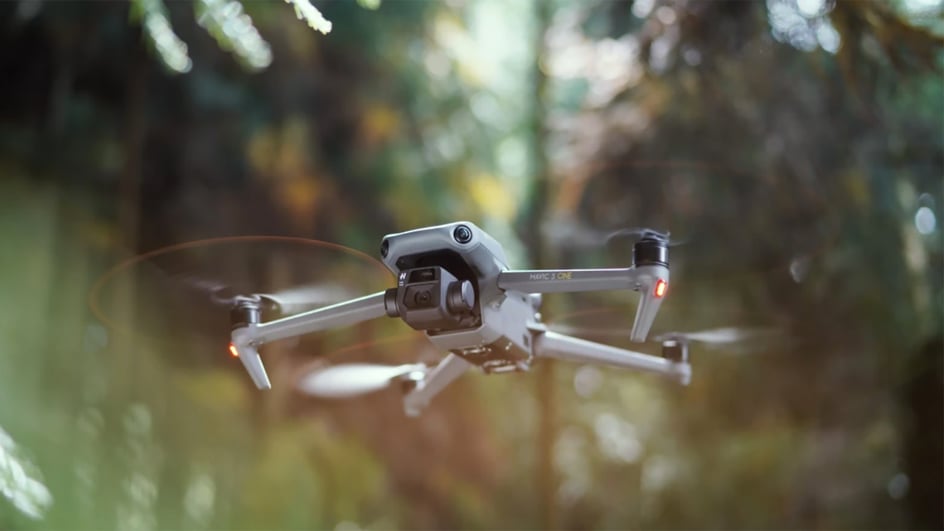
Sep 27, 2022
Want to become a certified drone videography master? Sure you do, it’s really cool. All that aerial footage recorded with a smooth 4K camera flying through the clouds is certainly enticing. However, there’s definitely a little bit of a learning curve to get through before you can confidently send your camera in the air.
Luckily there are a lot of resources out there for drone videography. There’s also lots of great aerial rigs and drones with built-in cameras which can also help you along your way as you try to master every element of video production.
If you’re curious about leveling up your drone videography capabilities, you can check out these drone flying tips and tricks below outlined by our team at Soundstripe.
Pretty cool stuff, right? Chris and Dave do a great job of breaking down how accessible drone videography can be. While they also give good insights into how you can quickly advance from a novice to a pro.
In the video above the guys use a DJI Mini 3 Pro for around $900. It’s a great choice for those first starting out, but there are also plenty of other options out there. So, buckle up, pick up your drone of choice, and let’s get started with our tips.
This is a great tip to start out with as so much of drone cinematography is (understandably) done outside and in bright sunlight. This means that if you really want to get the most out of your footage with a shallower depth of field, you’ll want to try out some ND filters.
Another great tip to follow when first starting off, you’ll always want to make sure that you calibrate your GPS for your drone before you take your maiden voyage. Calibrating your GPS will tell your drone where you want it to return to at the end of its flight (or in case anything goes wrong).
Forget this step and you might have to start over from scratch (and unfortunately with a replacement drone).
This tip seems obvious but you’d be surprised how often a novice flier will try to launch their drone from an obscured location (or even by tossing the drone in the air). A drone is designed to take off from a flat surface that is free of obstructions. This is for both your safety and the drone’s as any obstacles in the way of the blades can be dangerous for everyone.
Another tip to keep in mind for novice drone operators is to remember that it’s OK to let go of the sticks if you’re in trouble or in doubt. So many of our modern, smart drones are designed to stabilize themselves and even return home when they sense that something is wrong.
If you feel that you’re pushing your drone too much or find yourself in an uncomfortable location, just let go and let your drone right itself.
Honestly this should be rule number one, but a good general rule of thumb for pretty much any drone videographer is to simply never lose sight of your drone. Flying “line of sight” will ensure that your drone is safe and operating as it should be. If you choose to tempt fate and push your drone out beyond your vision anything could happen.
A good tip for videography either in the sky or on the ground, when coordinating your complex shot types with different camera movements it’s always helpful to have your start and end points in mind. This will help cut down on the variables in your shoot and you can really work on perfecting what those two shot points look like as you develop your camera move.
This tip is a good reminder that drones are meant to be fun! And, in fact, many have great built-in modes which can be a great (and often easy) way to pull off some cinematic shots without too much expertise. So don’t be afraid to try them out!
Once you do feel like you’ve reached a level above beginner and might be ready to finally take the training wheels off, sport mode might be for you. In sport mode your drone will remove some of its basic obstacle avoidance features as well as allow for faster travel — which, in truth, is often needed to get those super beautiful shots and moves.
Another cool feature which you shouldn’t ignore is the active track mode which many drone cameras have these days. Just like your smart AF technology in your favorite DSLR or mirrorless cameras, active track can be a great way to shoot moving footage that keeps your subject in focus.
We have to offer this last tip with a heavy disclaimer as our hosts in the video above attempt to catch their drone out of the sky. And while you can do this with certain drones (usually the smaller, safer ones), please do not try this with any bigger drones with the heavier blades.
In fact, it’d be more of a tip to simply never try this. Protect yourself and protect your drone!
Furthermore, if any of you aspiring professional drone pilot experts out there want to learn more about how to fly drones and explore the basic flight controls, there are plenty of great resources out there online.
With drone usage, a safe flight is any flight time and flight path that follows all the drone rules and regulations and is done with intentionality and care. Whether you have a small drone or one of the larger DJI drones out there, a new drone pilot should be safe and careful.
Cover image via DJI.
If you’d like to read up on more drone flying tips and cinematography tricks, check out these additional articles from the Soundstripe blog below: